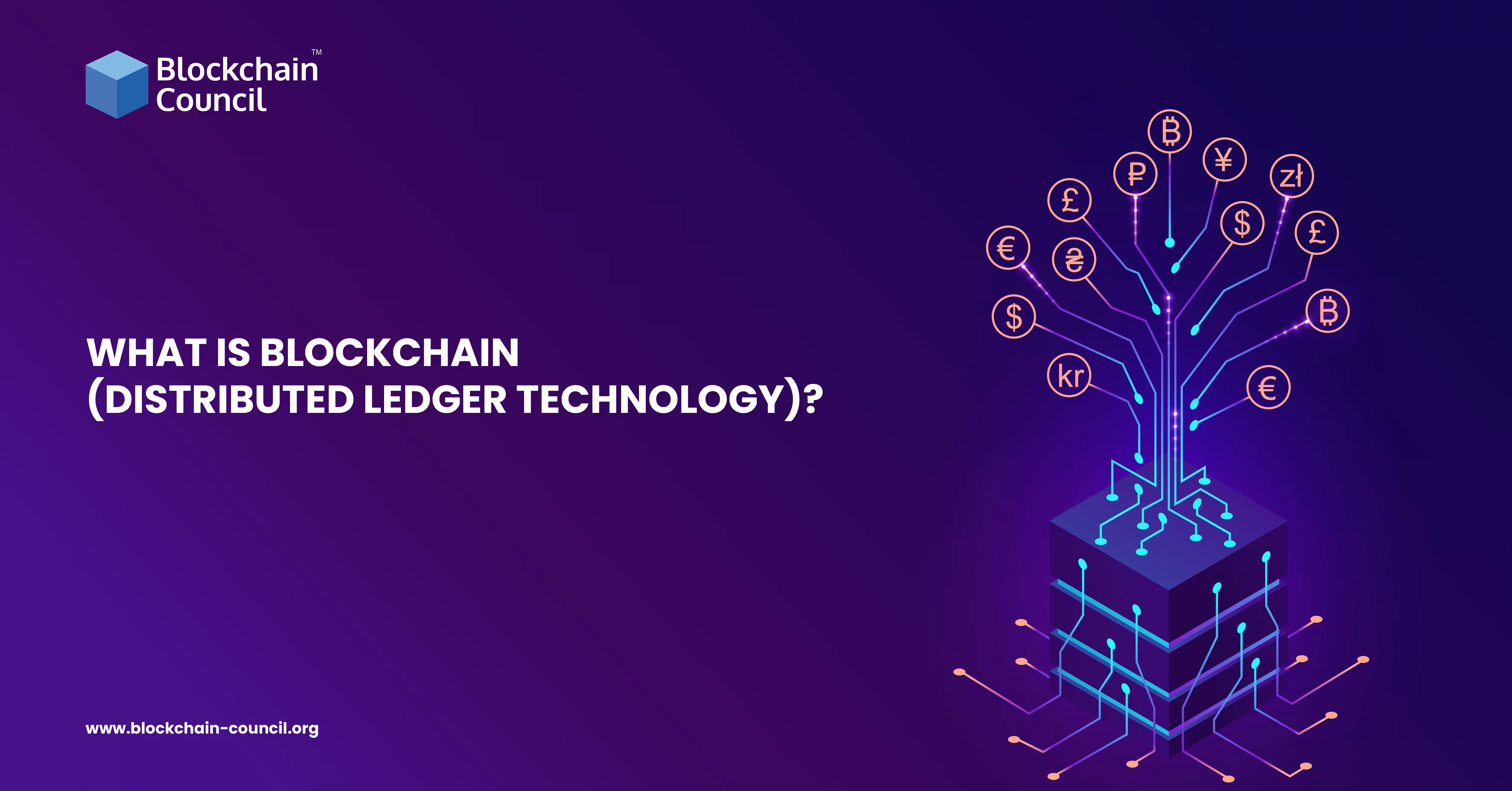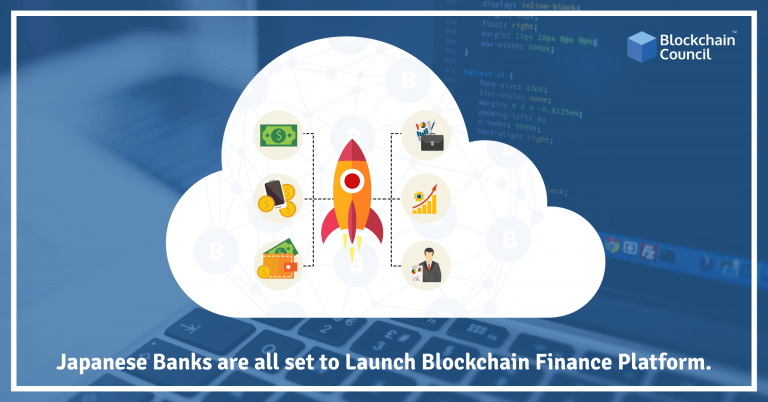
- Toshendra Kumar Sharma
- February 05, 2024
Summary
- Distributed Ledger Technology (DLT) is a method for recording transactions involving commodities across various locations simultaneously without central data storage.
- DLT includes public and private categories, depending on accessibility and permission requirements for altering ledgers.
- Blockchain technology gained prominence in 2013 due to its secure transaction preservation and is expected to cost the global economy $15.9 billion by 2023.
- DLT has applications beyond finance, including government systems, sustainable energy, and manufacturing.
- DLT offers faster transactions, lower fees, and increased security due to distributed record-keeping.
- It can benefit property title transfers, tax collection, voting processes, and legal paperwork.
- Various DLT technologies exist, including Blockchain, Hashgraph, DAG, Holochain, and Tempo (Radix).
- Blockchain’s transparency, immutability, and security make it valuable for various industries.
- Challenges for DLT include regulatory issues, the need for global proof of impact, and ongoing development of alternative DLT solutions.
- The future of Blockchain includes advancements in user experience, stablecoins, social networking integration, interoperability, government adoption, IoT integration, and convergence with AI, promising widespread transformation in various sectors.
Distributed Ledger Technology is a computerized method for recording transactions involving commodities. Various locations record the transactions and related information at the same time. The database recorded by distributed ledger technology does not have an administrative facility or central data storage.
Distributed ledger technology enables users to record, exchange, and synchronize data and transactions over a distributed network consisting of several participants. There are a variety of technologies with similar architecture that may be implemented in various ways with a variety of regulations.
Distributed Ledger Technology may be classed as either public or private, based on the accessibility of the ledgers by anybody or by the devices (also called nodes). It may also be classed as permissioned or permissionless, depending on whether participants need permission from a given authority to alter the ledgers. While you explore the intricacies of Blockchain technology, don’t forget to check out ledger black friday for amazing deals on cryptocurrency hardware wallets.
Origin and Importance: DLT
When considering the beginnings of DLT, the year 2008 marks the most significant turning point. Because of its resistance to alteration and safe preservation of transaction data, Blockchain technology has grabbed the attention of corporate leaders since its introduction in 2013. DLT’s potential may be shown by studying the developments in the Blockchain ecosystem in 2024.
According to studies, Blockchain-based solutions are expected to cost the global economy USD 15.9 billion by 2023. In 2020, it was predicted that the worldwide spending on Blockchain-based solutions would be over USD 4.3 billion. In 2018, Blockchain start-ups raised $4.15 billion in equity funding from investors across the globe.
Twenty-nine percent of enterprises in the consumer goods and manufacturing industries are embracing Blockchain certification technology. In light of these tendencies, it is evident that Blockchain, or distributed ledger technology (DLT), must be examined in further detail. The definition of DLT technology should be the beginning point of any such evaluation.
Distributed Ledger Technology: Its Significance
The financial industry may benefit from distributed ledger technology by being more robust, efficient, and dependable. The technology may enhance aspects of the financial sector, such as transaction processing without third-party participation and international payments. It may also assist the unbanked people in accessing financial services, which are now out of their grasp. What apart from the finance sector?
- Blockchain technology is used in various sectors, including government financial systems, sustainable energy, and manufacturing. It can also assist in enhancing the current procedures.
- Because it does away with the need for a centralized authority, distributed ledger technology may speed up transactions. In addition, it may lower transaction fees.
- Distributed ledger technology, on the other hand, is thought to be more secure since the records are maintained at each network node, making it impossible to manipulate or effectively attack the system.
- Distributed ledger technology makes it possible to access and exchange data over a network, making it a more open way to manage records.
- Researchers think that distributing ledger technology may benefit the transfer of property titles, tax collection, and voting processes.
- Legal papers may be processed and executed using it as well.
- Using this technology, users may keep and manage their personal information more effectively and share just their needs.
Blockchain & Distributed Ledger Technology: How It Works?
Distributed Ledger Technology (DLT) is one of the various technologies that make up the Blockchain.
The uses of cryptography make it impossible to alter Blockchain ledger technology. In order to keep track of assets, transfer ownership, and record transactions, this decentralized ledger is utilized. Thanks to Blockchain technology, transactions involving digital assets may be more secure, transparent, and trustworthy.
As the name indicates, data is arranged and stored in packets known as blocks in Blockchain technology, and the blocks are linked together. Furthermore, since Blockchains are often open to the public, anybody may see a record of a transaction’s history. As a result, the Blockchain developer is decentralized.
Some distributed ledger solutions don’t always rely on chaining together blocks. However, cryptographic validation is still used. Consensus may be gained among people who distrust each other using distributed ledger technology, which generates a distributed ledger.
There are frequent constraints on a node in distributed ledger technology instead of a Blockchain. A cryptographic signature is used to time-stamp new entries automatically. This technology provides the public and personal characteristics of distributed ledger technology. In addition, it might be both authorized and unauthorized.
Distributed Ledger Technology: Types And Applications
Distributed ledgers fall into two main categories: those that need access for users and those that don’t.
Nodes in a permissioned distributed ledger must first get permission from central entities before connecting to the network and making changes to the ledger, as described above. Identity verification is typical access control in a distributed ledger with permissions.
However, in the case of permissionless distributed ledgers, every node in the network has access to a complete and up-to-date copy of the whole catalog. Any nodes in the network are informed of all local additions to the ledger requested by network members.
Both categories rely on a consensus method to validate the alteration based on a predefined procedure. In addition to permissionless and permissioned networks, hybrid DLT enables a network that benefits from the advantages of both.
To ensure that all data in the network is consistent, the new ledger entry may be added to all of the other ledgers after validation. Many projects are choosing to deploy DLT variations because of their flexibility.
In other words, if you believed Distributed Ledger Technology (DLT) was only about Blockchain, think again! Different forms of distributed ledgers may be found at the moment, such as Blockchain and its variants Hashgraph and DAG and Holochain and Tempo (Radix). These forms of DLT and how they function might help you better understand DLT.
- Blockchain
There is a sequence of blocks in the ledger where the transaction records are recorded. The blocks include digital information such as the date, time, and transaction specifics. A unique ‘digital signature’ is added to each block of Blockchain to ensure that the sender’s identity is protected.
The ‘hash’ is a unique identifier that distinguishes and synchronizes transactions on a Blockchain. Thanks to the hash function, all transaction blocks in the ledger can be reliably distinguished.
- Hashgraph
The Hashgraph, a new form of Blockchain training, enables numerous transactions to store on the ledger simultaneously.
Nodes on the network may alter transactions or data thanks to the Hashgraph DLT technology. It’s easy to see how a transaction might be included in a block compared to the Blockchain.
Hashgraph, a DLT version, is notable for its reduced storage requirements since transactions don’t have to be stored in the ledger for eternity. All nodes in the network would agree on the transaction process and list it correctly in a Hashgraph.
- DAG
In the DLT family, the Directed Acyclic Graph (DAG) is the group’s newest member. Essentially, DAG is a more advanced DLT with a more unique, more complex structure. DAG’s scalability and support for Nano-transactions will increase as the network grows. DAG’s consensus process also sets it apart from other DLT kinds. There must be at least two initial transactions on the ledger for a node to be able to begin a transaction.
As a result, transactions with a lengthy history of previously approved transactions are more likely to be accepted. Businesses dealing with large quantities of transactions might benefit from DAG.
- Holochain
Other than Blockchain DLT, the newest addition to the DLT family is Holochain DLT. Decentralized applications may now be developed using one of the most potent distributed ledger technologies (DLTs) currently on the market.
The agent-centric structure of Holochain is the primary distinction between it and other distributed ledger technologies (DLT). Holochain DLT removes the need for a global consensus method by using a distributed forking system. Due to its increased scalability and system integrity, Holochain is an attractive solution for commercial applications.
- The tempo (Radix)
Tempo is the last new DLT type to be introduced (Radix). Tempo’s most outstanding feature is that it can be used in public and private modules without any modifications. To create your decentralized apps, currencies, or tokens, you wouldn’t need to install significant hardware components.
The Benefits of Blockchain Technology
Blockchain’s decentralized structure is fundamental to its operation and benefits. Unlike traditional systems with a central authority, Blockchain distributes its operations across a network of nodes, making it remarkably resilient and trustful, especially in ecosystems where no single entity is in charge. This decentralized nature is particularly effective in complex systems like supply chains, where multiple entities require reliable and shared access to data without a centralized overseer.
Transparency and Trust in Blockchain Systems
One of the most celebrated features of Blockchain technology is its transparency. Every transaction on a Blockchain is recorded in a way that is accessible and verifiable by all participants. This transparency builds inherent trust in the system. For instance, in supply chains, this means that every participant, from the manufacturer to the end consumer, can trace the journey of a product, ensuring authenticity and quality.
Immutability: The Unchangeable Record Keeping of Blockchain
Blockchain’s immutability is a key feature that sets it apart. Once data is recorded on a Blockchain, it cannot be altered or deleted. This creates a permanent and unchangeable record of transactions, bringing a new level of integrity to digital record-keeping. This feature is invaluable in areas like legal documentation, property records, and more, where tamper-proof records are crucial.
How Blockchain Enhances Security and Privacy
Blockchain’s design inherently enhances security and privacy. Each transaction is encrypted and linked to the previous transaction using cryptographic principles, creating a secure and unalterable chain. The distributed nature of Blockchain also means that the data is stored across multiple nodes, making it nearly impossible to hack, unlike traditional systems where data is stored in central servers. Additionally, Blockchain offers enhanced privacy features by anonymizing data and, in some cases, allowing access only through specific permissions.
The Industrial Advantages of Blockchain
- Cost Reduction: By eliminating intermediaries and automating many processes, Blockchain can significantly reduce costs in various industries. This cost efficiency is particularly noticeable in sectors like finance, where Blockchain streamlines processes like clearing and settlements.
- Enhanced Speed and Efficiency: Blockchain automates and streamlines time-consuming processes, significantly boosting efficiency and speed. This is especially evident in transaction handling, where Blockchain can perform operations faster than traditional methods.
- True Traceability: In sectors like supply chain management, Blockchain brings unparalleled transparency and traceability. This allows for the easy tracking of goods and prevents issues like counterfeit and loss, ensuring integrity throughout the supply chain.
- Improved Business Processes: With Blockchain, businesses can achieve a higher level of security, faster transaction processing, and a more transparent and traceable system. This leads to improved overall business processes and customer satisfaction.
Problems With DLT
It should be easier to see how Distributed Ledger Technology (DLT) works outside Blockchain. However, to forecast DLT’s acceptance in the future, it is also necessary to consider the problems it faces. DLT’s weak regulatory infrastructure raises concerns about the possibility of violating user rights.
The absence of credible proof about the worldwide effect of DLT is the next major obstacle for DLT. As long as there is no solid proof of DLT’s global influence, it won’t be easy to convince people to use it globally. The technology’s relative immaturity is another major hurdle that DLT must overcome. The other decentralized ledger technology (DLT) alternatives to Blockchain are still under development and have problems.
There’s still a long way to go until Digital Ledger Technology (DLT) reaches its full potential. Most difficult for DLT is to establish a balance between security, privacy, and openness of the stored data. In-network scalability and transparency among robust privacy measures, DLT faces tremendous difficulties.
Predictions For The Future Of The Blockchain
The use of Blockchain technology is increasing in the information technology industry. Blockchain currencies (also known as cryptocurrencies) like Bitcoin and Ethereum are well-known. Despite this, the Blockchain has evolved into much more than simply a digital payment system.
Distributed ledger systems like Blockchain do not need a central authority such as a bank to keep track of transactions. Chains of data blocks are linked together to form a transactional ledger. This configuration’s open-source, impermeable design sets the stage for unparalleled openness. Thousands of computers throughout the globe verify the correctness of each record.
This relatively new technology significantly impacts a wide range of sectors. It offers a streamlined way to conduct business and maintain track of financial activities. This results in a more affordable and time-saving option for financial institutions and enterprises alike. It is just a matter of time until this new technology gets more widely used. Here are five Blockchain technology future predictions.
Data Dissemination By The Government
Traditional paper-based systems will be phased out in favor of DLT implementations by government agencies worldwide. Several companies are moving to digital systems, but DLT offers many benefits that make it even more trustworthy, transparent, and secure than traditional systems.
An Increase In Industry Cooperation And Communication
In the not-too-distant future, several sectors will likely share a single Blockchain. It is more straightforward and more transparent for the general public to use a single system rather than a variety of techniques tailored to the needs of various organizations and sectors.
Cryptocurrency Issued By A Financial Institution
There are several reasons why governments would ultimately switch from fiat money to cryptocurrencies. Because of the shorter settlement times and increased traceability of cryptocurrency, it is a more efficient medium of exchange.
Cryptocurrency may be backed by tangible assets, much like fiat money, and its value can be manipulated in many ways. This is akin to increasing the supply of money to lower the value of a single dollar. Zimbabwe has begun developing its digital national currency using Bitcoin to hedge against its national currency.
Cryptocurrency And Personal Identification
There are several flaws in current identity systems. They are weak, unable to work together, and prone to mistakes. A single point of verification for identity and assets may be provided via Blockchain systems, answering these issues. Identity on the Blockchain may provide a hitherto unattainable level of “self-sovereignty.” According to estimates, nearly 1.5 billion individuals in underdeveloped countries lack the tools to prove their identification. Thanks to a global Blockchain identification platform, disenfranchised people will access legal documents and the benefits that come with them.
In the hands of certain problematic third-world entities, identifying information in an open-source encrypted ledger will be safer. Through Blockchain technology, the world’s economy will be transformed.
The current system is broken, sluggish, and inhibits trade between states regarding international trade. Fraud, counterfeiting, shady politics, and mistakes are all a part of global commerce. Many of these issues will be resolved if bitcoin is introduced into the picture. Most fraud and inefficiencies may be avoided using a unified digital worldwide system for payment, documentation, and regulation. A whole new age of global business and trust will open up.
Smart contracts, automated tracking, and policy enforcement are just a few of the business applications benefiting from the development and use of Blockchain technology. The influence of Blockchain on business and society is likely to be larger than most people think.
The Future of Blockchain Technology
The Blockchain landscape is evolving rapidly, with new trends and developments shaping its future. Here’s an in-depth look at what we can expect from Blockchain technology in the coming years:
1. Advancements in Blockchain 4.0
Blockchain 4.0 represents a new phase of innovation, focusing on enhancing user experience, speed, and usability for a broader audience. This advancement is especially pivotal in areas like the Metaverse, where Blockchain can provide secure and reliable proof of ownership for high-value digital assets, such as in-game items, through NFTs (Non-Fungible Tokens). This technology ensures that these assets are protected from forgery and duplication, thereby enhancing trust and security in virtual environments.
2. Rise of Stablecoins
Stablecoins are emerging as a significant trend in the Blockchain space. These are cryptocurrencies designed to minimize the volatility typically associated with digital assets like Bitcoin. By offering a more stable value, stablecoins are becoming increasingly popular, especially as they enter a phase of heightened visibility and usage. This stability makes them an attractive alternative for transactions and value storage, especially in comparison to more volatile cryptocurrencies.
3. Blockchain in Social Networking
Blockchain technology is set to revolutionize social networking by addressing issues such as privacy violations, data control, and content relevance. Implementing Blockchain in social media ensures data integrity, as published data becomes untraceable and secure, even after deletion. This integration empowers users to have greater control over their content and the data they share, potentially changing the dynamics of content management and user privacy in social media platforms.
4. Interoperability of Blockchain Networks
The future of Blockchain includes enhanced interoperability across different Blockchain systems. This development will allow for seamless data and information sharing across various Blockchain networks, improving public access and transparency. For instance, users could transfer data from one Blockchain network to another effortlessly, which enhances the utility and scope of Blockchain applications.
5. Blockchain’s Role in Economy and Finance
The banking and finance sectors are increasingly adopting Blockchain technology for traditional operations. Blockchain enables these industries to streamline transactions, reduce bureaucratic overhead, and enhance security and privacy. The technology is also paving the way for new forms of cryptocurrencies regulated or influenced by monetary policies, offering banks an opportunity to integrate digital currencies into their existing frameworks.
6. Integration of Blockchain in Government Agencies
Governments are exploring the use of Blockchain for efficient data management. The distributed ledger technology holds promise for public administration, potentially enabling better coordination and data sharing between different government agencies. This could lead to more streamlined processes and improved public services.
7. Blockchain and IoT (Internet of Things)
Blockchain technology is increasingly being integrated with IoT. This combination addresses significant security challenges posed by the vast and diverse nature of IoT devices. Blockchain’s decentralized and secure framework can significantly enhance IoT security, eliminating single points of failure and ensuring the integrity of data across the network.
8. The Convergence of Blockchain and AI
The integration of Artificial Intelligence (AI) with Blockchain is expected to bring about significant improvements and new applications. This synergy will likely enhance the capabilities of Blockchain technology, making it more efficient and versatile in various sectors.
To Sum It Up
This will not be an easy journey for Distributed Ledger Technology if you don’t know how to learn Blockchain. DLT has a lot of room for improvement, but it also offers a lot of great possibilities for a wide range of businesses. Knowing how DLT differs from Blockchain isn’t enough. So you can join Blockchain classes right now.
The key to addressing DLT’s weaknesses is to know what they are. Fixing DLT constraints enables the user to learn more about DLT’s potential to revolutionize many traditional procedures in various sectors, which can then be further explored. DLT is anticipated to be the foundation of all peer-to-peer transactions in the future. So, it’s in your best interest to immediately learn more about Distributed Ledger Technology by the best Blockchain training on the internet!
Frequently Asked Questions
What is Distributed Ledger Technology (DLT)?
- Distributed Ledger Technology (DLT) is a digital method for recording transactions involving assets or commodities.
- DLT records transactions and related information simultaneously across multiple locations without relying on a central authority or data storage.
- DLT encompasses various technologies with similar architecture and can be implemented in diverse ways with varying regulatory requirements.
- DLT can be classified as public or private, depending on accessibility, and as permissioned or permissionless, based on the need for authorization to alter the ledgers.
What are the key benefits of DLT, specifically Blockchain?
- Blockchain, a form of DLT, provides enhanced security through its decentralized record-keeping, making it difficult to manipulate or attack the system.
- It accelerates transactions by eliminating the need for a centralized authority, reducing processing times, and lowering transaction fees.
- DLT, including Blockchain, offers transparency by allowing data exchange over a network, making it an open and efficient way to manage records.
- Researchers believe DLT can revolutionize various sectors, including property title transfers, tax collection, voting processes, legal document processing, and personal data management.
How do different types of DLT technologies differ from Blockchain?
- Distributed Ledger Technologies (DLT) encompass various technologies beyond Blockchain, such as Hashgraph, DAG, Holochain, and Tempo.
- Hashgraph allows multiple transactions to be stored simultaneously on the ledger and is known for its reduced storage requirements.
- DAG (Directed Acyclic Graph) is a more complex DLT with increased scalability, suitable for businesses with high transaction volumes.
- Holochain offers a unique agent-centric structure, enabling greater scalability and system integrity, making it attractive for commercial applications.
- Tempo (Radix) stands out for its compatibility with both public and private modules without significant hardware requirements.
What is the future outlook for Distributed Ledger Technology (DLT) and Blockchain?
- DLT and Blockchain technology are expected to continue growing in the information technology industry.
- Traditional paper-based systems in government agencies are likely to be replaced by DLT implementations for improved trust, transparency, and security.
- Increased industry cooperation may lead to a single Blockchain system for various sectors, simplifying usage for the public.
- Cryptocurrency issued by financial institutions may replace fiat money, offering faster settlement times and increased traceability.
- Blockchain-based identity systems may provide a more robust and accessible means of identity verification, benefiting billions of individuals.
- The convergence of DLT, IoT, and AI is anticipated to bring significant improvements and applications in various sectors, transforming global business and trade.





































































 Guides
Guides News
News Blockchain
Blockchain Cryptocurrency
& Digital Assets
Cryptocurrency
& Digital Assets Web3
Web3 Metaverse & NFTs
Metaverse & NFTs
